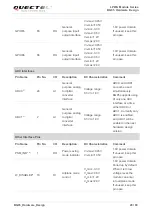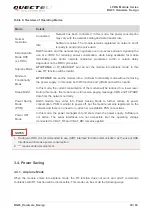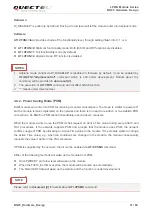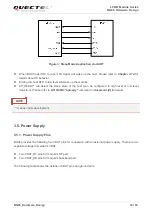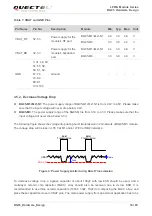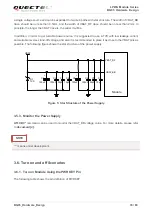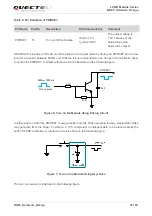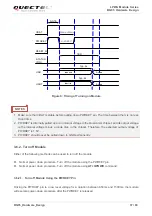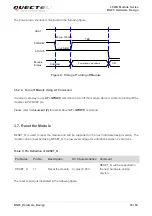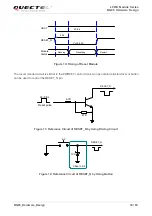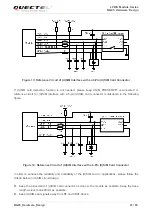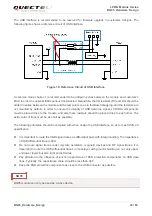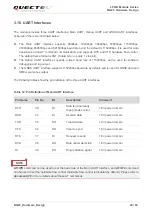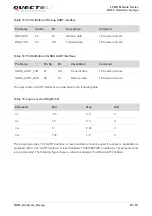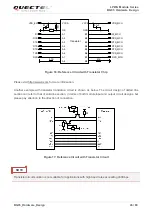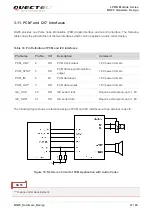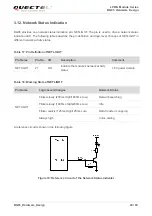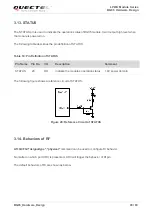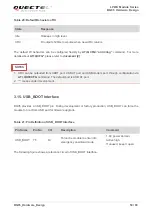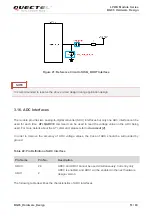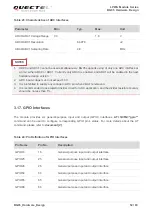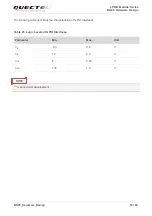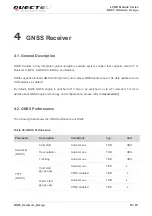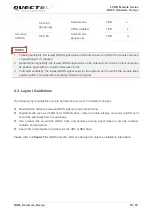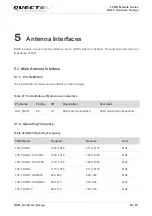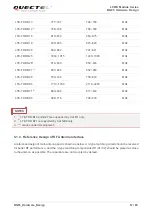
LPWA Module Series
BG95 Hardware Design
BG95_Hardware_Design 42 / 80
Assure the ground between the module and the (U)SIM card connector short and wide. Keep the
trace width of ground and USIM_VDD no less than 0.5mm to maintain the same electric potential.
Make sure the bypass capacitor between USIM_VDD and USIM_GND less than 1uF, and place it as
close to (U)SIM card connector as possible. If the system ground plane is complete, USIM_GND can
be connected to the system ground directly.
To avoid cross-talk between USIM_DATA and USIM_CLK, keep them away from each other and
shield them with surrounded ground. USIM_RST should also be ground shielded.
In order to offer good ESD protection, it is recommended to add a TVS diode array with parasitic
capacitance not exceeding 15pF. In order to facilitate debugging, it is recommended to reserve
series resistors for the (U)SIM signals of the module. The 33pF capacitors are used for filtering
interference of GSM 900MHz. Please note that the (U)SIM peripheral circuit should be close to the
(U)SIM card connector.
The pull-up resistor on USIM_DATA line can improve anti-jamming capability when long layout trace
and sensitive occasion are applied, and should be placed close to the (U)SIM card connector.
“*” means under development.
3.9. USB Interface
BG95 contains one integrated Universal Serial Bus (USB) interface which complies with the USB 2.0
specification and supports low-speed (1.5Mbps) and full-speed (12Mbps) modes. The USB interface is
used for AT command communication, data transmission, software debugging and firmware upgrade.
The following table shows the pin definition of USB interface.
Table 11: Pin Definition of USB Interface
For more details about USB 2.0 specification, please visit http://www.usb.org/home.
Pin Name
Pin No.
I/O
Description
Comment
USB_VBUS
8
PI
USB connection detection
Typically 5.0V
USB_DP
9
IO
USB differential data bus (+)
Require differential impedance of
90
Ω
USB_DM
10
IO
USB differential data bus (-)
GND 3
Ground
NOTE

